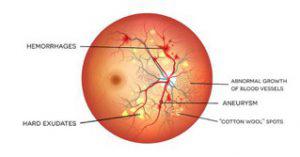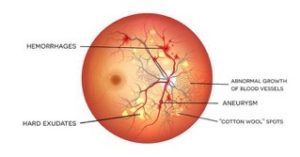 What is Diabetic Retinopathy?
What is Diabetic Retinopathy?
The most prevalent type of diabetic eye diseases is diabetic retinopathy. Diabetic retinopathy generally impacts only persons with diabetes for many years. Retinopathy can impact all diabetic patients and is specially harmful if left untreated, raising the possibility of blindness. With aging as well as with less regulated blood sugar and blood pressure levels, the possibility of causing diabetic retinopathy is considered to raise.
What are the symptoms leading to doctor’s recommending – Diabetic Retinopathy Treatment?
- Vision loss
- Impaired color vision
- Blurred vision
- Fluctuating vision
Evaluations for Diabetic Retinopathy
- Fluorescein angiography
- Optical coherence tomography
- Dilated eye exam
Treatment for Diabetic Retinopathy
- Anti-VEGF Injection Therapy – A protein, that causes an abnormal blood vessel to develop within the eye that blocks vascular endothelial growth, can reverse blood vessel growth and decrease fluid accumulation in the retina.
- Focal/Grid Macular Laser Surgery – Lasers create small burns on the leaky regions of the macula’s vessels. After this procedure, the person may need anti-VEGF treatment.
- Corticosteroids – The medication may be implanted or injected into the eye by the doctors. Cataracts or glaucoma may increase the chances. The eye pressure is monitored by the doctor.
- Scatter Laser Surgery – This procedure involves up to 2,000 small burns, in which the retina has been removed from the macula. The abnormal blood vessels may decrease. Two or more sessions may be required. Laser procedure can save the central sight, but it can decrease the side, color and sight at night.
- Vitrectomy – If the retina and vitreous humor and vision clouds flow into the blood vessels, this surgery may be essential. It separates the blood that has been leaked so that the patient can better see.













